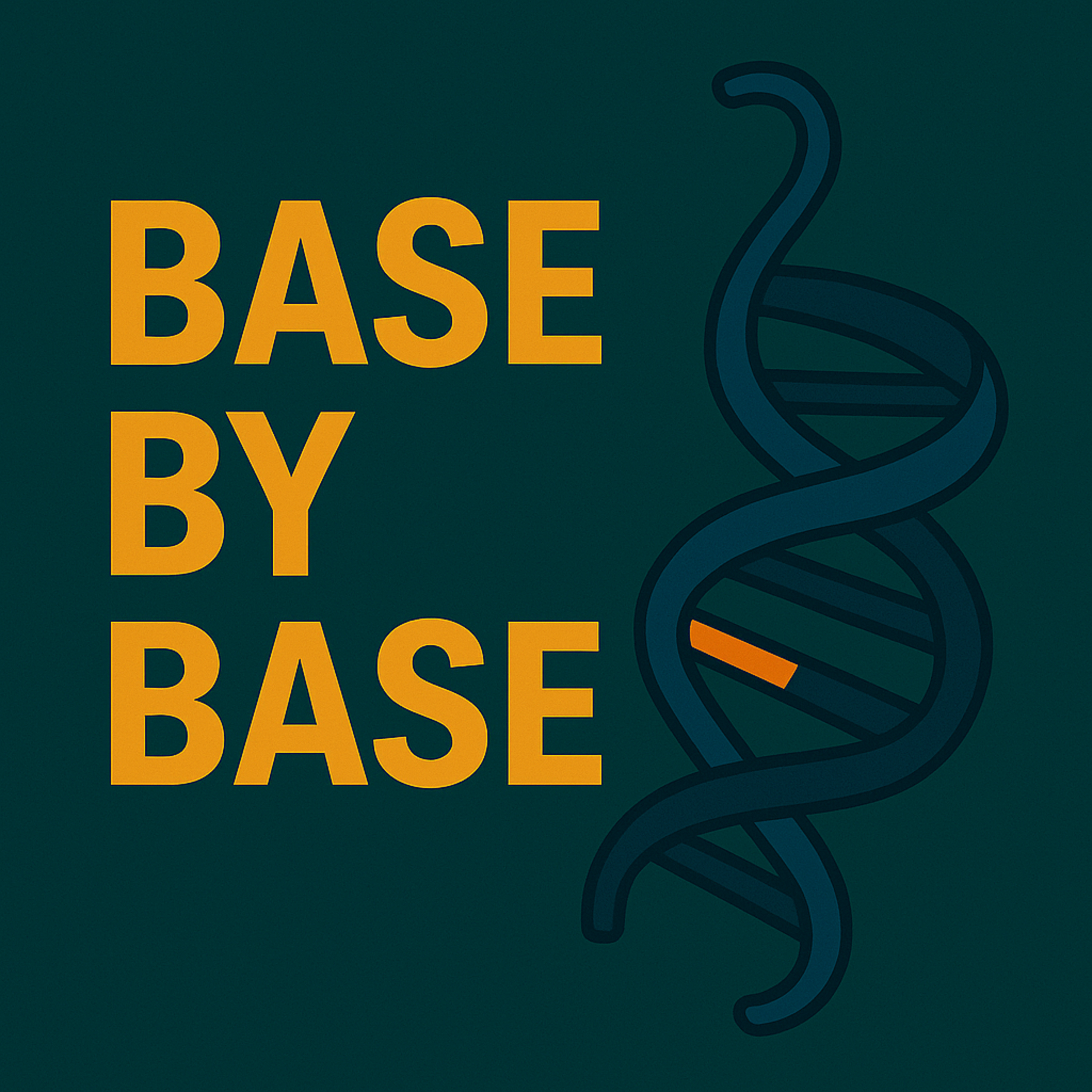Show Notes
️ Episode 35: Tracing the Evolutionary History of CCR5Δ32 — Insights from Ancient and Modern Genomes
In this episode of Base by Base, we explore groundbreaking research by Ravn et al. (2025) published in Cell that reconstructs the origin, spread, and selective pressures acting on the CCR5Δ32 deletion in human populations. Through a comprehensive analysis of 934 ancient genomes and 2,504 present-day genomes, the authors trace how this 32-base-pair deletion in the CCR5 gene—known to confer resistance to HIV-1 infection and influence other immune-related traits—emerged on a specific haplotype in the Western Eurasian Steppe and underwent positive selection during the Late Neolithic and Bronze Age, ultimately shaping its modern-day frequency and geographical distribution .
Study Highlights:
The CCR5Δ32 deletion arose on a pre-existing haplotype containing 84 linked variants, allowing the authors to develop HAPI, a haplotype-aware probabilistic model that identifies the deletion even in low-coverage ancient genomes. By applying HAPI to 934 ancient DNA samples spanning the Mesolithic through the Viking Age, the study identifies the oldest carriers of CCR5Δ32—dating back more than 6,700 years in the Western Steppe—thus pushing its origin deeper into prehistory than previously appreciated . The analysis reveals that CCR5Δ32 was subject to strong positive selection between approximately 8,000 and 2,000 years before present, with ancestry-stratified tests indicating that selection primarily acted in Eastern hunter-gatherer and Caucasus hunter-gatherer populations before spreading westward. Spatial diffusion modeling shows a rapid longitudinal expansion of the allele during the Late Neolithic and Bronze Age, followed by a plateau in frequency over the past two millennia . Furthermore, modern European and Latin American haplotype patterns confirm that post-Columbian admixture introduced the CCR5Δ32 haplotype into the Americas, while the identification of multiple haplotypes (A, B, and C) clarifies why certain proxy SNPs previously used to tag CCR5Δ32 proved unreliable.
Conclusion:
Ravn et al. demonstrate that CCR5Δ32 did not simply arise in recent medieval times or spread solely through Viking-related migrations; instead, it emerged on a specific haplotype in the Western Eurasian Steppe over 6,700 years ago and rose to high frequency under positive selection during the Late Neolithic and Bronze Age. By integrating ancient and modern genomic data with innovative probabilistic and spatial models, this work illuminates how a single deletion linked to HIV resistance became a significant immunological signature in human populations, with implications for understanding past pathogens and guiding future therapeutic strategies targeting CCR5 .
Reference:
Ravn, K., Cobuccio, L., Muktupavela, R.A., Meisner, J., Danielsen, L.S., Benros, M.E., Korneliussen, T.S., Sikora, M., Willerslev, E., Allentoft, M.E., Irving-Pease, E.K., & Rasmussen, S. (2025). Tracing the evolutionary history of the CCR5Δ32 deletion via ancient and modern genomes. Cell, 188, 1–17. https://doi.org/10.1016/j.cell.2025.04.015
License:
This episode is based on an open-access article published under the Creative Commons Attribution 4.0 International License (CC BY 4.0) — https://creativecommons.org/licenses/by/4.0/




